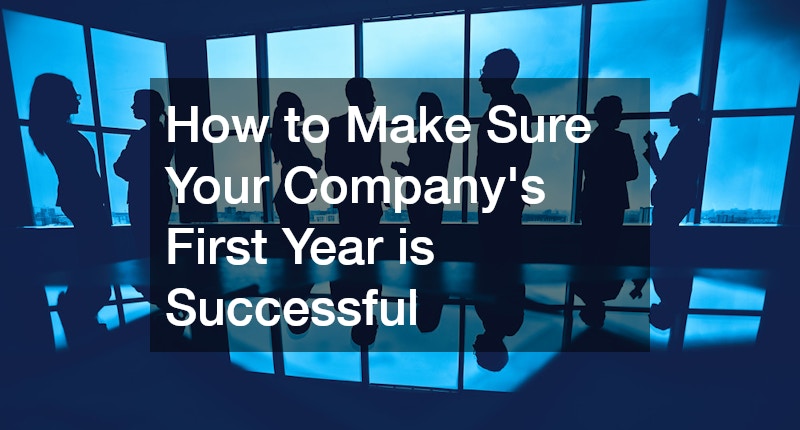
Every entrepreneur knows that the first year of business can make or break long-term success. Establishing clear goals, building a solid support network, and executing well-planned strategies set the stage for sustainable growth. From compliance to branding, each decision you make in the early months carries outsized impact. Engaging experienced business lawyers early on ensures you form the right entity and draft essential contracts, giving you a strong legal foundation. With these guiding principles, you’ll be equipped to navigate challenges and seize opportunities as they arise.
Defining Your Vision and Strategy
Begin by articulating a clear mission statement that describes your purpose, values, and long-term aspirations. A well-crafted vision aligns your team around common goals and informs every operational decision. Use SWOT analyses to pinpoint your strengths, weaknesses, opportunities, and threats. This clarity helps you prioritize resource allocation and measure progress against meaningful milestones.
Next, set SMART objectives—specific, measurable, achievable, relevant, and time-bound—to break down your vision into actionable steps. Outline quarterly targets for revenue, customer acquisition, and product development. Regularly revisit these goals to adapt to market feedback and new data. This dynamic approach keeps your strategy focused and responsive.
Finally, assign ownership for each goal to team members with the right skills and accountability. Foster open communication channels so individuals can report successes and roadblocks. By tying incentives to objective achievement, you motivate your staff to collaborate toward collective success.
Ensuring Legal Compliance and Structure
Choosing the optimal business structure shields personal assets and optimizes tax obligations. Incorporate as an LLC, corporation, or partnership based on liability and growth plans. Register with federal, state, and local authorities to secure essential permits and tax IDs. Proper registration prevents fines and operational hiccups.
Draft robust contracts for suppliers, clients, and employees to define expectations and mitigate disputes. Engage business lawyers to review terms, negotiate favorable clauses, and ensure compliance with labor laws. Their expertise reduces legal risk and gives you confidence in every agreement.
Establish internal policies—such as nondisclosure and data protection protocols—to safeguard intellectual property and customer information. Regularly audit compliance processes and update policies as regulations evolve. A proactive stance on legal matters builds credibility with stakeholders and regulators.
Securing Adequate Insurance Coverage
Business operations carry inherent risks—from property damage to liability claims—that can derail growth if uninsured. Partnering with a reputable commercial insurance company helps you identify appropriate policies, including general liability, property, and business interruption coverage. Tailored plans protect physical assets, customer data, and revenue streams.
Review coverage limits and deductibles carefully to balance protection with premium costs. Consider specialized endorsements for industry-specific exposures, such as cyber liability or professional errors and omissions. Your insurer can also guide you on risk management best practices.
Establish a claims procedure and train your team to document incidents promptly. Quick reporting helps you recover losses faster and maintain uninterrupted operations. Demonstrating strong insurance practices can also bolster your standing with lenders and investors.
Building Financial Resilience
Sound financial management underpins every successful enterprise. Open dedicated business accounts to separate personal and company funds. Implement accounting software for real-time tracking of income, expenses, and cash flow projections. This visibility prevents surprises and informs strategic decisions.
Create detailed budgets for operating costs, marketing campaigns, and capital expenditures. Monitor variances monthly and adjust spending accordingly. When revenue falls short, you’ll know which areas to trim. Maintaining a reserve fund covers unexpected needs without resorting to high-interest debt.
Plan for worst-case scenarios, including downturns or client payment delays. Knowing your break-even point and burn rate keeps you prepared to pivot quickly. Clear financial insights also strengthen your position when negotiating with commercial insurance company underwriters or lenders.
Crafting Your Brand Identity
Your brand conveys your promise to customers through visual elements, tone, and messaging. Work with business sign makers to design memorable signage that reflects your values and draws attention. Consistent use of logos, colors, and fonts across signage, websites, and marketing materials builds brand recognition.
Develop brand guidelines outlining voice, imagery, and design standards. Share them with every team member and external partner to ensure uniform application. Strong branding fosters trust, helps you stand out in competitive markets, and supports premium pricing.
Gather customer feedback on your brand experience through surveys and social listening. Use insights to refine messaging and adjust your visual presence. Inviting stakeholder input early increases buy-in and ensures your brand resonates with your target audience.
Establishing Efficient Operational Systems
Smooth operations depend on reliable processes and infrastructure. Map out workflows for core activities—order fulfillment, customer support, and inventory management. Clearly defined procedures reduce errors and training time for new hires.
Invest in scalable technology platforms that automate repetitive tasks and centralize data. Whether it’s a CRM for sales, an ERP for production, or a ticketing system for service, the right tools free your team to focus on value-added work.
Regularly review operational metrics—cycle time, error rates, and capacity utilization—to identify bottlenecks. When you spot inefficiencies, initiate targeted improvements. Continuous optimization keeps costs down and customer satisfaction high.
Leveraging Local Partnerships for Production
When you need custom-printed merchandise or branded apparel, collaborating with a local screenprinting company offers rapid turnaround and quality control. Local partners can visit your location to confirm designs, discuss material options, and troubleshoot color matching.
Partnering locally reduces shipping delays and fosters stronger relationships. You can inspect test runs in person and make adjustments on the spot. This hands-on approach boosts production speed and ensures final products meet your standards.
Negotiate volume discounts or long-term contracts to secure favorable rates as your order volumes grow. A committed supplier will prioritize your deadlines and even offer design consultations to maximize the impact of your branded goods.
Safeguarding Your Premises
Keeping your workplace safe and secure protects employees and assets. Engage qualified commercial electrician services to install code-compliant wiring, emergency lighting, and dedicated circuits for heavy equipment. Proper electrical infrastructure prevents outages and fire hazards.
Implement access control installation to manage entry to sensitive areas. Badge readers, keypads, and biometric scanners deter unauthorized access, while logging entry data for security audits. Layered controls give you peace of mind and support liability management.
Complement electronic security with good housekeeping and regular safety inspections. Address trip hazards, maintain clear egress routes, and train staff on emergency procedures. A proactive approach to safety reduces accident-related downtime and insurance premiums.
Managing Large-Scale Projects
If your operation involves heavy lifts or elevated work, partnering with crane rentals provides the equipment and expertise you need. Ensure the rental agreement includes certified operators, insurance coverage, and site assessments for safe setup.
Coordinate project timelines meticulously, aligning crane delivery and pick-up with other contractors’ schedules. Delays can incur significant daily rental fees, so clear communication is essential.
After project completion, inspect your premises for any damage and document that all equipment has been removed. Promptly finalizing rentals and payments helps maintain positive relations and avoids unexpected charges.
Maintaining a Pest-Free Environment
Pest infestations harm both reputation and operations. Engaging a proactive pest control service that offers scheduled inspections and treatments keeps rodents, insects, and wildlife at bay. Preventive measures protect inventory, equipment, and employee health.
Work with technicians to seal entry points, install traps, and apply environmentally responsible treatments. Frequent monitoring allows you to address new threats before they escalate into costly problems.
Maintain clean, clutter-free workspaces and proper waste disposal practices. Good sanitation, combined with professional pest control, signals to customers and inspectors that you adhere to high standards.
Protecting Your Asset Value
Even successful businesses may close or pivot. Planning for business liquidation ensures you can wind down smoothly if needed. Develop an exit strategy that addresses asset disposition, debt settlement, and stakeholder communication.
Inventory fixed assets, determine resale or auction values, and identify potential buyers for equipment. Work with accountants and business lawyers to handle creditor claims and legal notices in compliance with regulations.
A thoughtful liquidation plan minimizes losses, preserves personal credit, and upholds your reputation. Whether you sell to a competitor, assign assets to creditors, or dissolve the entity, clear steps prevent chaos.
Scaling for Growth
As you move beyond year one, revisit your original goals and adjust plans based on market feedback. Recruit talent to fill skill gaps, invest in leadership development, and refine your organizational structure.
Seek partnerships or joint ventures with complementary businesses. For example, collaborating with local truck accessories providers can open new revenue streams if you supply fleets or service vehicles.
Continue monitoring financial, operational, and customer metrics. With data-driven insights, you’ll know exactly when to expand, diversify offerings, or explore new markets.
Surviving and thriving in your company’s first year demands foresight, discipline, and strategic investment. By securing expert support—from legal counsel and commercial insurance company advisors to commercial roofing and electrical professionals—you build a resilient enterprise. Investing in branding, operations, and risk management early ensures you avoid costly setbacks. Embrace continuous improvement, leverage local partnerships, and maintain financial rigor to set the stage for lasting success.



